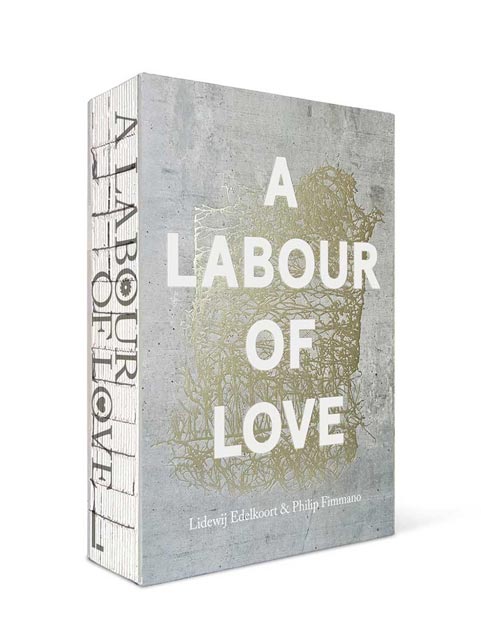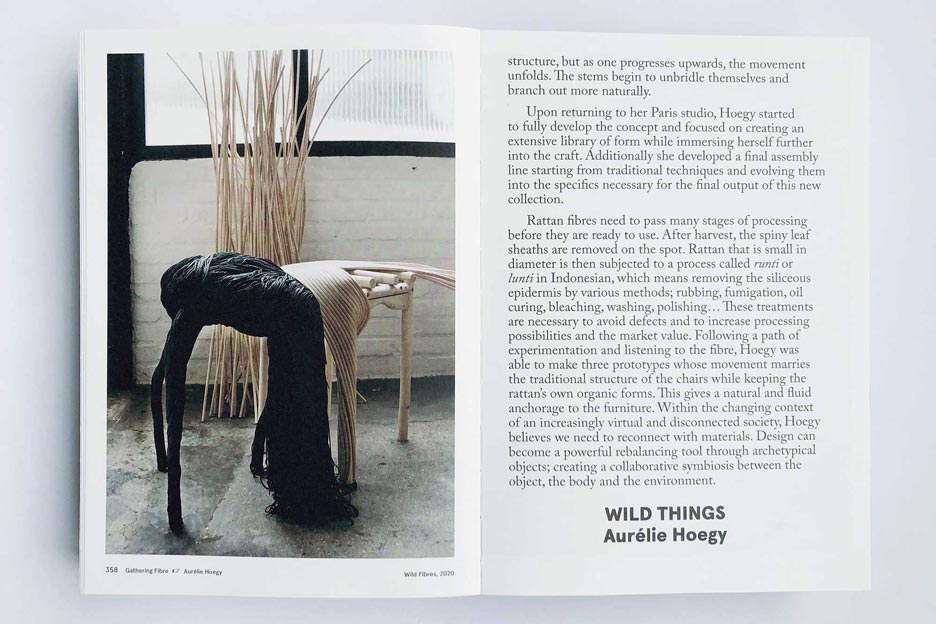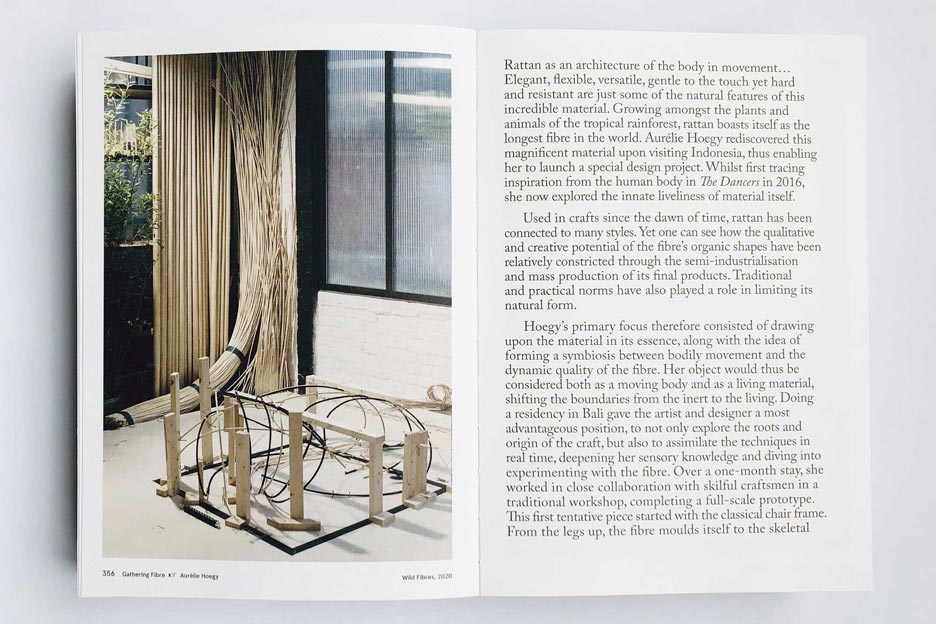A LABOUR OF LOVE
Lidewij Edelkoort & Philip Fimmano
2020
Previewing a future of responsible production and circular thinking, the world-renowned trend forecaster Li Edelkoort, introduces Aurelie Hoegy as one of the new makers in contemporary design. ethical practice and organic aesthetics. “Aurélie Hoegy will be unveiling a new collection of works for the first time. The furniture expresses rattan’s essence, along with the idea of the symbiosis between bodily movement and the dynamic quality of the fibre. Over a one-month stay in Bali, she worked in close collaboration with a traditional rattan workshop, before further developing the pieces in her Paris studio. From the legs up, the fibre moulds itself to the skeletal structure, but as one progresses upwards, the movement unfolds.“
The book’s title refers to craftsmanship as an alternative form of pride and fulfilment. It comes at a unique time in history when principles are evolving and a more mindful, altruistic approach is needed in design and manufacturing.
Divided into 12 themes that reflect current materials and techniques, this bold book introduces the new makers in contemporary design, previewing a future of responsible production, circular thinking, ethical practice and organic aesthetics. It offers insight into how designers are giving shape to materials and process, from reviving the loom and recycling waste to social inclusion and growing matter. Their conscious philosophies will change our world with careful and considered choices that can ultimately reconnect us to nature and guide us towards a better tomorrow.
As Edelkoort observes “People know they need to slow down the pace of overconsumption and overproduction; otherwise our planet will be lost. The creative world gains insight and invents systems where values shift and design plays an activist role, developing ideas about sharing between designer and the worker, designer and the underprivileged, designer and the amateur, designer and the designer… This new era gives hope for other ways of perceiving what is considered success, renown and profit. Here, capital is strictly human.”
Since the beginning of the century, the design discipline has turned to the human hand as the antidote to a profound feeling of disarray, and our inability to cope with the superfluous industrial design of former decades – especially in a post-coronavirus landscape. Yet now the hand and technology work together to produce prodigious objects and sustainable materials that prepare us for an emerging period of humanity, empathy and collaboration.
Fimmano notes how “A dedicated generation is leading this movement, using machines to serve their purposes, reprogramming antiquated robots to construct their designs, hacking 3D printers to boost form and repurposing mechanical looms for contemporary creativity. Suddenly the machine is no longer the antithesis of unbridled innovation but the handmaid of the designer; enabling, embellishing and advancing production. Man and machine finally merge and become one. Places for creating, sharing and manufacturing will become veritable cottage industries where the designer is at once the farmer, artisan and custodian of our earth, enamoured with all the phases and facets of the process. A labour of love.”
2/
A/ FRONT
DESIGN IN REGARDS
DAVID BIHANIC
B/
DESIGN IN REGARDS
David Bihanic
2019
French edition
Aurelie Hoegy wrote with Louise Schouwenberg & Emanuele Quinz, the chapter “House of concepts”.
This book is a collection of texts, interviews and testimonials about new teaching practices of design.
To what may the difference in how Design is taught be attributed today? The fundamentals of its teachings are in a state of relative upheaval, and the trend seems to be moving gradually away from an approach rooted in the one-way transmission of its history, culture and theory, and more closely towards one rooted in mutual learning and practice. Johannes Itten and Walter Gropius firmly believed that Design Education was closely tied to the evolution of the inner being and the accomplishments related thereto, and was, in no way, to be a hindrance to the creative process or potential. For others, though, the field is the sole means to knowledge acquisition through the pooling of both think-how and design-how, enabling greater subjectivity and fostering an enlightened and free conscientiousness.
The texts gathered in this volume attest to the diversity of myriad players in the French-speaking community of Design Teaching, and attempt to shed light on a question that is not only complex, but also crucial.
Edited by David Bihanic.
Textes from François Azambourg, Jean-François Dingjian, Olivier Koettlitz, Alok Nandi, Ruedi Baur, Younes Duret, Pierre-Damien Huyghe, Pier Paolo Peruccio, Marc Baroud, Ronald Filion-Mallette, David Olivier Lartigaud, David Pilloix, Luc Bergeron, Guillaume Foissac, Lysianne Lechot-Hirt, Emanuele Quinz, Samuel Bianchini, Davide Fornari, Pierre Litzler, Patricia Ribault, David Bihanic, Manuelle Freire, Philippe Louguet, Gilles Rougon, François Brument, Bernard Gabillo, Françoise Mamert, Laurence Salmon, Evelyne Calzettoni, Ying Gao, Gilles Marion, Louise Schouwenberg, Etienne Candel, Sergio Gonçalves, Guilène Marion, Xochitl del Carmen Arias González, Constance Guisset, Laurent Massaloux, Benjamin Stroun, Aurélie Hoegy, Xavier Massé, Sophie Tinland Lelandais, Clémentine Chambon, Roberto Iñiguez Flores, Alvise Mattozzi, Matali Crasset, Nounja Jamil, Bernard Moïse, Frédéric Valentin, Fabienne Denoual, Tiphaine Kazi-Tani, Carola Mouja.


